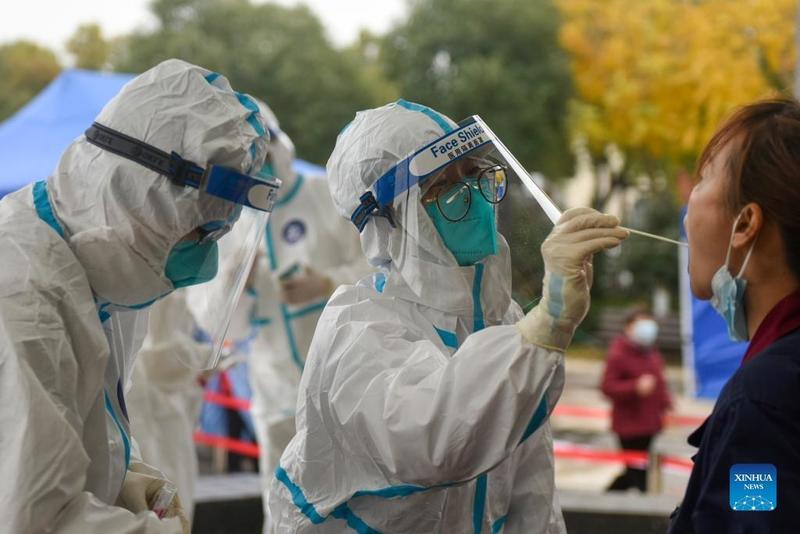 A medical worker takes a swab sample from a resident for nucleic acid test in Huangjiabu township of Yuyao city, East China's Zhejiang province, Dec 12, 2021. (PHOTO / XINHUA)
A medical worker takes a swab sample from a resident for nucleic acid test in Huangjiabu township of Yuyao city, East China's Zhejiang province, Dec 12, 2021. (PHOTO / XINHUA)
Thanks to effective zero-cases policy the country has been adopting, the latest round of COVID-19 resurgence in some provinces has barely affected normal economic activities and social life in places beyond.
The fact that China is now capable of containing sporadic regional outbreaks within a short time, even during the winter season when the novel coronavirus is highly transmissible, will inject confidence that the virus can be effectively controlled.
Over the past week, Zhejiang province registered 138 locally transmitted COVID-19 cases, of which 44 were reported in Ningbo, 77 in Shaoxing, and 17 in the provincial capital, Hangzhou. New cases were also reported in the Inner Mongolia autonomous region and Shaanxi province on Sunday. Which highlights the still severe anti-pandemic situation nationwide.
Yet compared with the early days of the pandemic, when detection of new cases sometimes stirred up panic among the public and even a rushed response on the part of public health workers, people now seem more at ease in the face of new infections being reported. This is mainly because a mature set of prevention and control measures is now in place. These include mass testing, contact tracing, targeted lockdowns and restrictions on travel and public gatherings, which can be activated whenever necessary.
The fact that more than 1.16 billion Chinese people have now been fully vaccinated against COVID-19 has also put the country in an advantageous position, even when dealing with the emergence of new variants.
China has so far not detected any cases related to the highly contagious Omicron variant, although it has spread to nearly 70 countries worldwide. This has enabled the country to have enough time to accelerate its research into vaccines and tests to better deal with any possible Omicron outbreaks in the future.
Yet despite the containment efforts, the country still faces immense pressure at its border, with several domestic outbreaks already triggered by infections imported via port cities. "The top priority for China's disease containment work focuses on ports," Mi Feng, a spokesman for the National Health Commission, said on Saturday.
Health officials must maintain full vigilance against any new cases, especially as New Year's Day and Spring Festival are approaching, which will likely increase the possibility of the virus spreading. One lesson that has been learned over the past two years is that any lapse in prevention and control efforts could


